Ireland’s Sustainable Tourism: Preserving Paradise
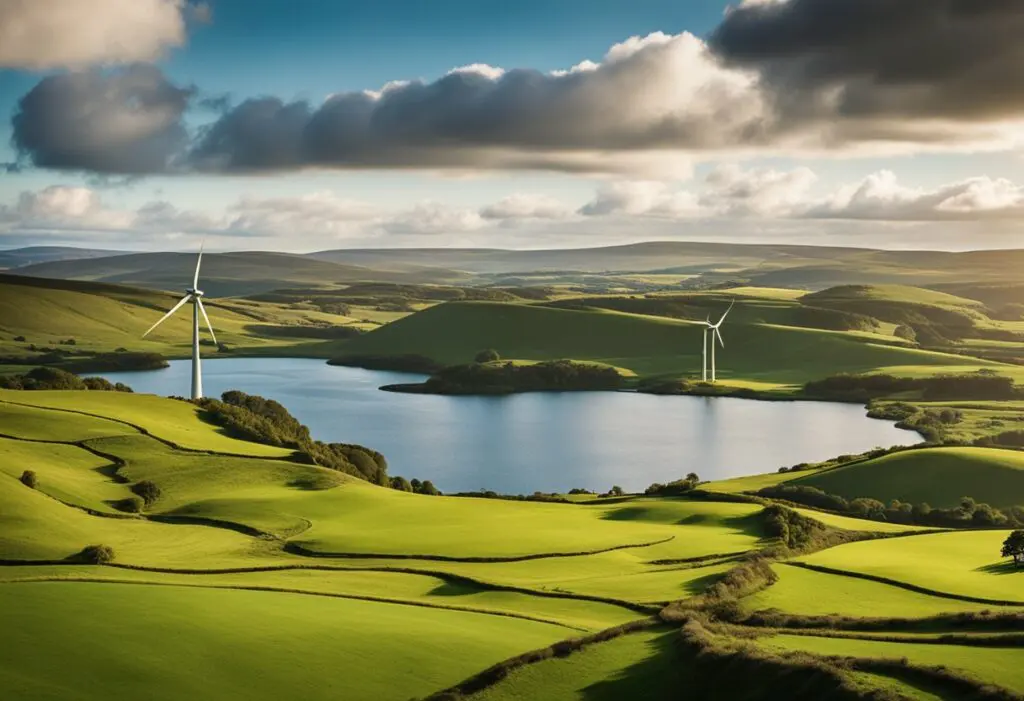
Updated On: March 26, 2024 by Aya Radwan
Ireland’s breathtaking landscapes, from rugged coastal cliffs to verdant rolling hills, encapsulate a natural heritage as rich in biodiversity as in cultural history. This emerald jewel has become a beacon for sustainable travel, with initiatives designed to safeguard its environment and the well-being of future generations. As we explore Ireland’s natural heritage, we’re invited to engage with a form of tourism that not only leaves a light footprint but also enhances our connection with nature and local communities.
Our journey through Ireland’s sustainable tourism reveals a tapestry of ecosystems where flora and fauna thrive amidst historic ruins and cultural sites. By preserving these habitats, Ireland offers an authentic experience of the land’s enduring beauty, inspiring a deeper appreciation for conservation efforts. In response to environmental challenges, Ireland embraces sustainable tourism practices, incorporating them seamlessly into discovering its landscapes and celebrating Irish cultural experiences. These measures ensure that the impact of human activities is minimised, allowing for a future where this natural paradise and its traditions can continue to inspire.
Ireland’s Diverse Ecosystems
Ireland’s natural heritage is a mosaic of ecosystems ranging from bogs and peatlands to majestic mountains and coastal landscapes, rich in biodiversity and inspiring sustainable tourism.
Lush Bogs and Peatlands
Bogs and peatlands are among the most iconic of Ireland’s habitats. These waterlogged environments are crucial carbon stores and house unique plant species, such as sphagnum mosses. They play a pivotal role in the country’s ecosystem, supporting a range of wildlife, from invertebrates to bird species that thrive in these conditions.
Rugged Mountains and Valleys
The mountains and valleys of Ireland present a rugged terrain sculpted by natural forces over millions of years. These areas provide essential habitats for a variety of flora and fauna. The Wicklow Mountains, for instance, offer a haven for native red deer and the peregrine falcon, underscoring the biodiversity within these ecosystems.
Coastal Landscapes and Islands
Ireland’s coastline is a dramatic confluence of cliff faces and sweeping beaches, while the surrounding islands testify to the nation’s rich ecosystems. Islands like the Skelligs are famous for their seabird colonies, including puffins and gannets, highlighting the importance of these habitats for biodiversity conservation.
Flora and Fauna of the Emerald Isle
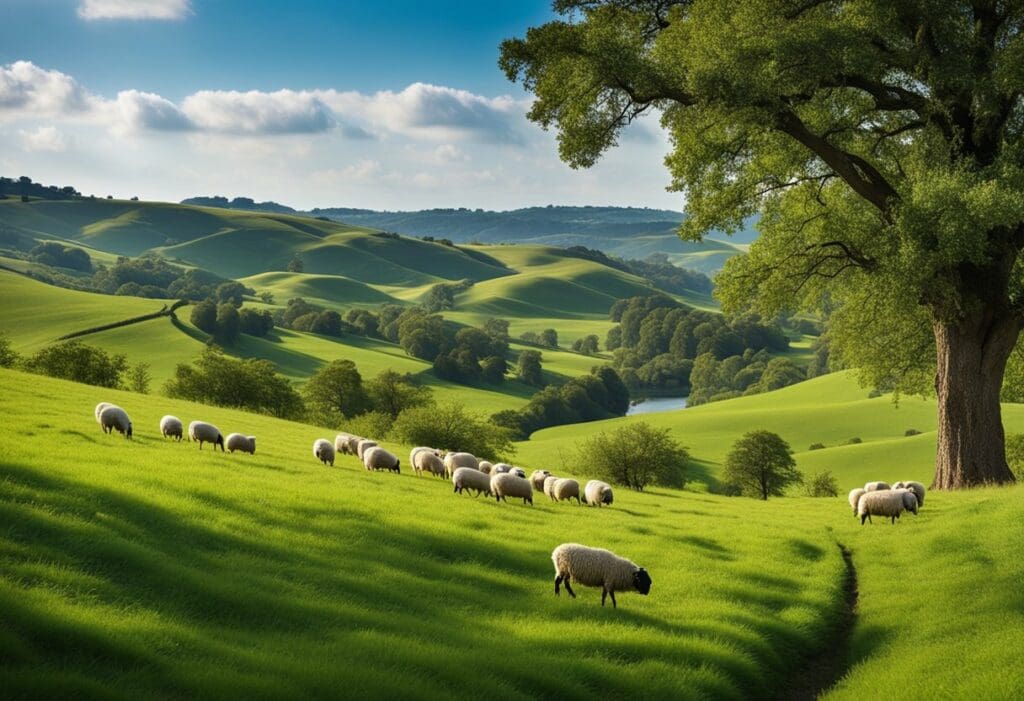
Ireland is a land teeming with various flora and fauna, from the red squirrels of its woodlands to the rare orchids that bloom amidst its grasslands. Our journey through the natural heritage of this island reveals a vibrant tapestry of life that calls for ongoing conservation efforts to ensure it remains a haven for diverse species.
Native Wildlife and Endangered Species
Our native wildlife is a window into Ireland’s rich, biodiverse heritage. Among the treasured species, the red squirrel, once on the decline, continues to be a noteworthy conservation success. Dedicated work has allowed these charming arboreal mammals to hold onto their place within our woodlands in the face of encroaching grey squirrels. But our task is far from over; Ireland’s flora and fauna consist of multiple endangered species that remain under threat, including the corncrake and the freshwater pearl mussel. By protecting their habitats, we anchor our commitment to these species and the broader ecological network they represent.
Unique Plant Life and Wildflowers
Ireland’s plant life is lush and unparalleled, with species well-adapted to the island’s climate and soil conditions. Strolling through the Irish countryside, one can witness vast expanses of heather covering the hills in a purple hue. The native oak trees stand as sentinels of our ancient forests, supporting intricate ecosystems within their canopies. Wildflowers add to the allure, with orchids among the most enchanting. Each unique petal resonates with the story of Ireland’s natural history, a testament to our resilient and widespread biodiversity that demands admiration and active preservation.
Cultural and Natural Heritage Sites
Ireland’s landscape is a tapestry woven with the threads of both cultural and natural wonders. Our storied past and breathtaking environments are encapsulated within our diverse selection of heritage sites, some of which have achieved recognition by UNESCO.
UNESCO World Heritage Sites
Brú na Bóinne, more famously known for its structures like Newgrange, is one of Ireland’s most significant archaeological landscapes. Enlisted as a UNESCO World Heritage Site, it’s older than Stonehenge and even the Egyptian pyramids, holding a wealth of prehistoric artefacts and engravings within its bounds.
- Sceilg Mhichíl, or Skellig Michael, perched on a rocky outcrop in the Atlantic, showcases the austere life of early Christian monks. Its monastic remains, preserved over centuries, highlight a remarkable spiritual and cultural quest.
- The Giant’s Causeway, with its interlocking basalt columns, is a marvel of geology and shrouded in folklore. It brings to life tales from Irish mythology, where giants are said to have roamed.
Historic and Mythological Landmarks
Ireland’s cultural tapestry is further enriched by the interwoven threads of history and mythology, prominent in landmarks like:
- Trinity College Dublin houses the symbolic Book of Kells, a manuscript testament to Ireland’s monastic heritage and an artistic jewel. Our irreplaceable cultural heritage is also carried by the ancient rhythms of Irish harping traditions, often echoing in old halls or during festivals.
- Across our land, Connemara‘s natural beauty is a testament to the wild, untamed spirit of Ireland’s landscapes, while the Cliffs of Moher command awe with their sheer drop into the Atlantic. This natural heritage site has inspired artists and travellers for centuries.
- Up in the Wicklow Mountains, the serene vistas offer a retreat into nature, providing sanctuary and inspiration, just as it has throughout our history – a reminder of why sustainable travel is important to preserve such treasured sites for future generations.
Our commitment is to showcase these sites and encourage their preservation through responsible exploration, exemplified by our approach at Connolly Cove.
Ireland’s Sustainable Tourism: Conserving the Island’s Beauty
In our commitment to preserving the natural landscapes of Ireland, we recognise the vital role that conservation efforts play in ensuring the sustainability of these regions for future generations. Our dedication to maintaining the country’s diverse ecosystems underpins all our actions in these areas.
National Parks and Protection Efforts
Ireland’s national parks are at the forefront of our protection initiatives. In areas like Killarney National Park, we are engaged in reforestation projects, diligently planting native tree species to bolster forest health and resilience. Conservation programmes in these parks help safeguard the pristine landscapes, from the rolling green hills to clear freshwater lakes, all contributing to the mission of protecting the land for posterity.
Safeguarding Biodiversity and Habitats
Biodiversity conservation is another pillar of our work. Efforts to preserve habitats across Ireland take various forms, from limiting development in sensitive areas to promoting sustainable travel practices. Protecting our wide array of habitats, including bogs, woodlands, and coastal ecosystems, ensures that Ireland’s unique flora and fauna can thrive. These actions are imperative for wildlife, and maintaining the ecological balance is essential to our livelihoods and heritage.
Environmental Challenges and Response
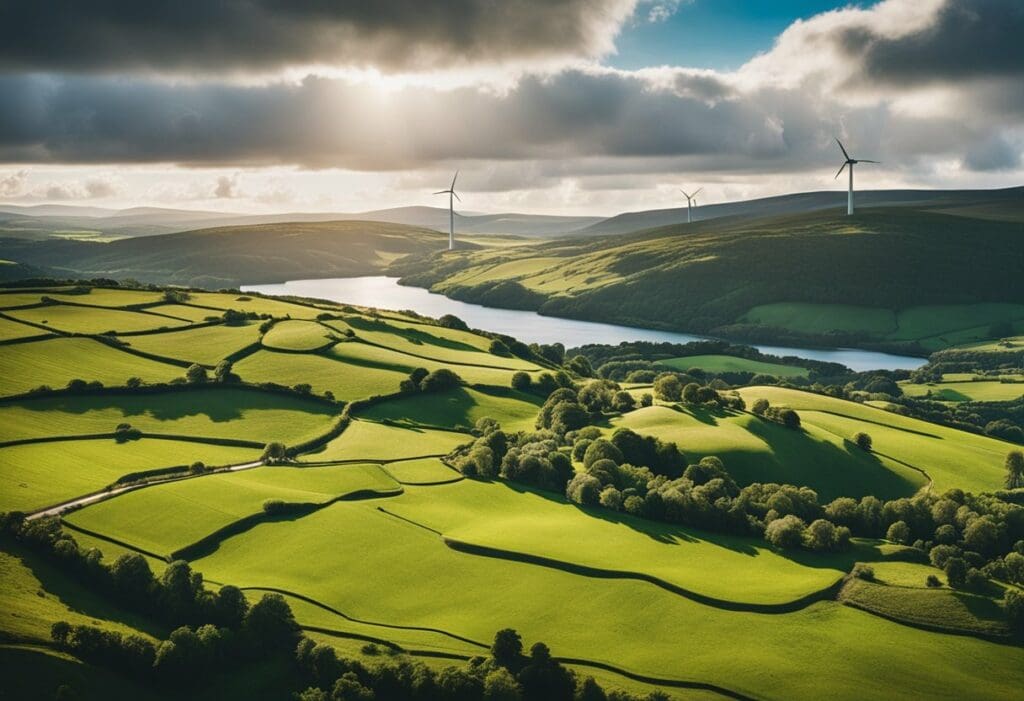
In addressing the vital issue of safeguarding Ireland’s natural wonders, we’re confronted by pressing environmental challenges such as climate change and pollution. Our response is pivotal in preserving these paradises for sustainable travel.
Climate Change Impact
Climate Change: Ireland’s stunning landscapes face significant impacts due to climate change, threatening our delicate ecosystems and the tourism they support. We’ve observed increased storm frequency and rising sea levels, part of a broader global pattern of environmental upheaval. Reflecting on Ireland’s Green Deal, our nation is channelling efforts into achieving carbon neutrality by 2050. This involves government policy and the collective action of communities and businesses, intertwining conservation with our way of life.
Pollution and Its Prevention
Pollution: With the allure of Ireland’s crystal-clear waters and lush green hills, the blight of pollution poses a dire threat to these idyllic settings. Waste and chemical runoff remain significant concerns, jeopardising terrestrial and aquatic habitats.
Prevention: To combat this, various measures have been implemented to manage waste, reduce emissions, and educate the public. Initiatives like investing in renewable energy and enforcing stringent waste disposal regulations illustrate our dedication to environmental stewardship. Ireland actively promotes the reduction of single-use plastics, understanding the necessity of preserving natural habitats, as shared in The Environment: Ireland’s Green Deal. We strive to mitigate pollution’s impact through consistent and evolving efforts, ensuring that our green isle remains vivacious and inviting for all.
Sustainable Tourism Initiatives
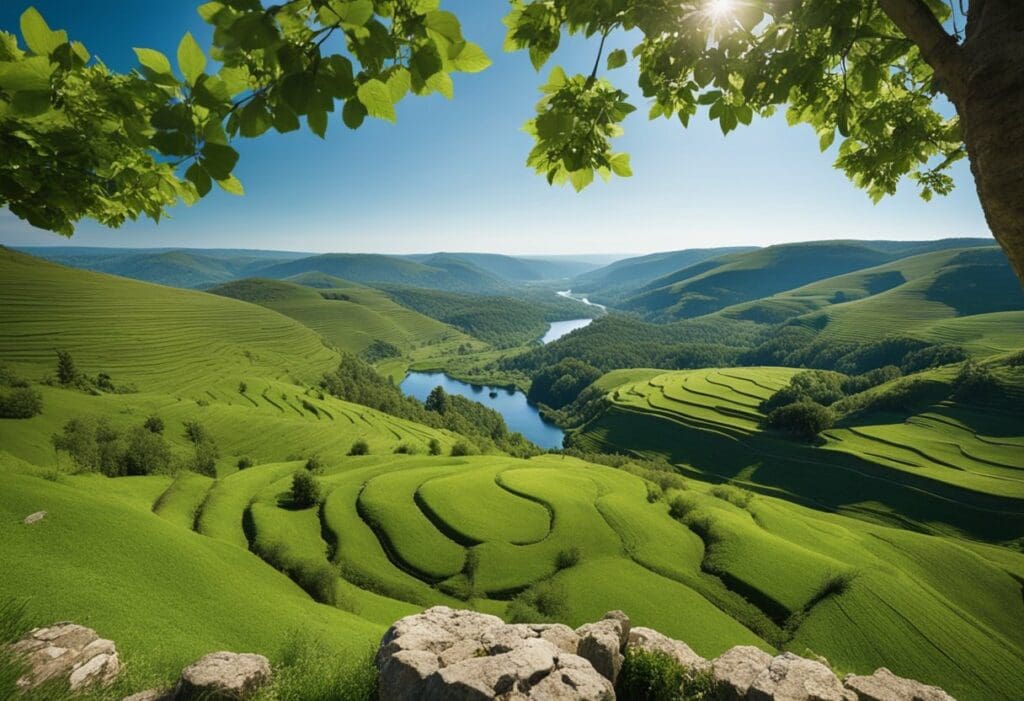
Ireland is renowned for its breathtaking landscapes and commitment to environmental conservation. These elements have paved the way for various sustainable tourism initiatives that invite travellers to experience the Emerald Isle’s beauty responsibly.
Eco-Friendly Travel Options
We acknowledge the importance of reducing the environmental footprint of tourism. Many of Ireland’s eco-friendly travel options are designed to preserve the country’s natural wonders while catering to eco-conscious tourists. These measures include promoting low-carbon transportation options, such as cycling tours and electric vehicle hire, and establishing eco-friendly accommodations that utilise sustainable practices like rainwater harvesting and solar energy. For instance, the Green Hospitality Award recognises businesses’ significant efforts to operate sustainably.
Community-Based Tourism
Community-based tourism in Ireland leverages the close-knit fabric of local Irish communities. Visitors gain an intimate understanding of Ireland’s cultural tapestry by involving residents in sustainable travel initiatives, such as guided heritage walks and artisan workshops. This approach not only supports local economies but also helps to maintain cultural heritage sites. Through initiatives like these, travellers can actively contribute to Ireland’s sustainability goals while immersing themselves in authentic experiences that respect the local environment and culture.
Discovering the Irish Landscape
We’re fortunate to have an abundance of national parks cradled within Ireland’s natural beauty, where one can embark on hiking adventures. Special mention must go to the Gap of Dunloe in County Kerry, a spectacular mountain pass carved by glaciers. Its panoramic views and challenging terrain invite both seasoned hikers and casual walkers.
The Allure of Country’s Water Bodies
The serenity of Ireland’s lakes also makes them a focal point for visitors. Places like Ballyvaughan in County Clare offer a gateway to such wonders. Here, one can appreciate the untamed beauty of the Irish landscape while respecting its ecosystems’ fragility. Our lakes and water bodies are integral to the Irish identity, providing a picturesque setting and habitats for a rich array of biodiversity.
Irish Cultural Experiences
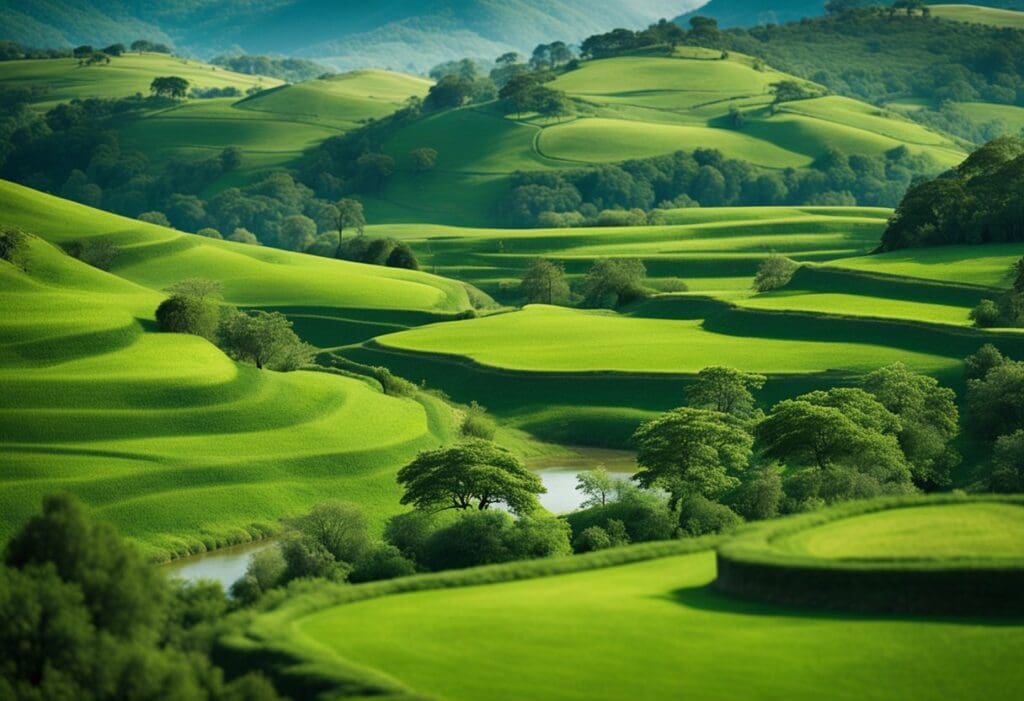
We invite you to delve into the heart of Irish cultural experiences, where the vibrant and intangible cultural heritage takes centre stage. Through traditional music and timeless stories, the essence of Ireland comes alive.
Traditional Music and Uilleann Piping
Uilleann piping is a profoundly expressive fixture within Irish music and has been recognised as an important part of our intangible cultural heritage. This distinct form of traditional music, with the uilleann pipes delivering a hauntingly beautiful sound, has captivated audiences for generations. Originating from the Gaelic word uille, meaning ‘elbow’, the Uilleann pipes are operated by elbow-driven bellows, creating a melodic complexity unique to Irish music.
Folklore and Local Mythologies
Irish mythology offers a window into the soul of our land, weaving together tales of heroes, epic journeys, and mystical creatures that still echo throughout the modern Irish psyche. Engage with the narratives of the Tuatha Dé Danann and the Fenian Cycle, which are not just remnants of historical value but are an ever-present part of our collective consciousness. It is in these stories that our cultural heritage continues to thrive. It inspires a sustainable and respectful approach to travel, where every myth and folk tale is a thread in the rich tapestry of Ireland’s history.
Impact of Human Activities
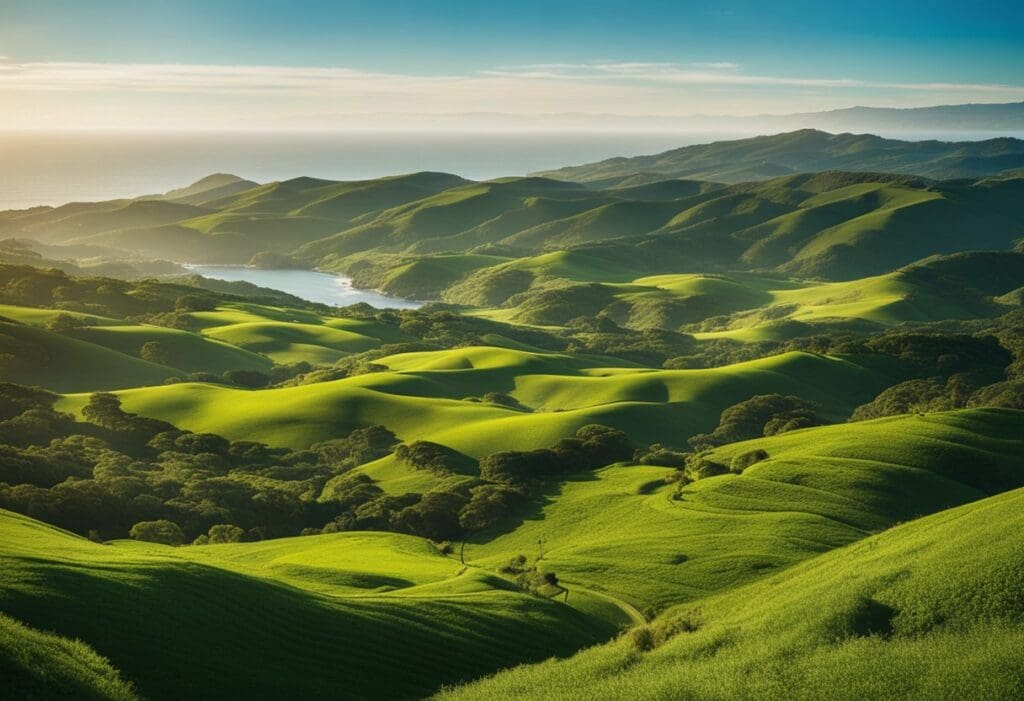
Our actions as humans have a discernible impact on natural landscapes and their ecosystems, making it necessary to assess our involvement. We particularly see the influence of human activities in agriculture, fishing, and various industries, which can harm and help biodiversity and conservation efforts.
Agriculture, Fishing, and Industry
Agriculture in Ireland has traditionally been a mainstay of the economy, but it often comes at a price to our environment. The utilisation of pesticides and fertilisers can lead to the degradation of ecosystems and may affect local biodiversity. Overfishing poses a significant risk to marine life, disrupting food chains and causing population decline in certain species. While our industries have been the backbone of economic growth, they have released pollutants, including oil, into the environment. However, it’s not just traditional industries affecting the environment; the tech boom has its ecological footprint, although it’s less visibly impactful.
Conservation Success Stories and Challenges
Despite these challenges, we’ve seen some inspiring conservation success stories. Ireland’s commitment to protection has led to the rejuvenation of various native species through concerted efforts. Schemes to maintain and restore natural habitats have seen positive trends in some areas. However, we must confront ongoing challenges, such as repairing the damage the pandemic has indirectly caused to conservation efforts. Resources were diverted, and eco-friendly initiatives took a backseat. Now, more than ever, we must re-energise these projects to safeguard our precious natural heritage.
Looking to the Future
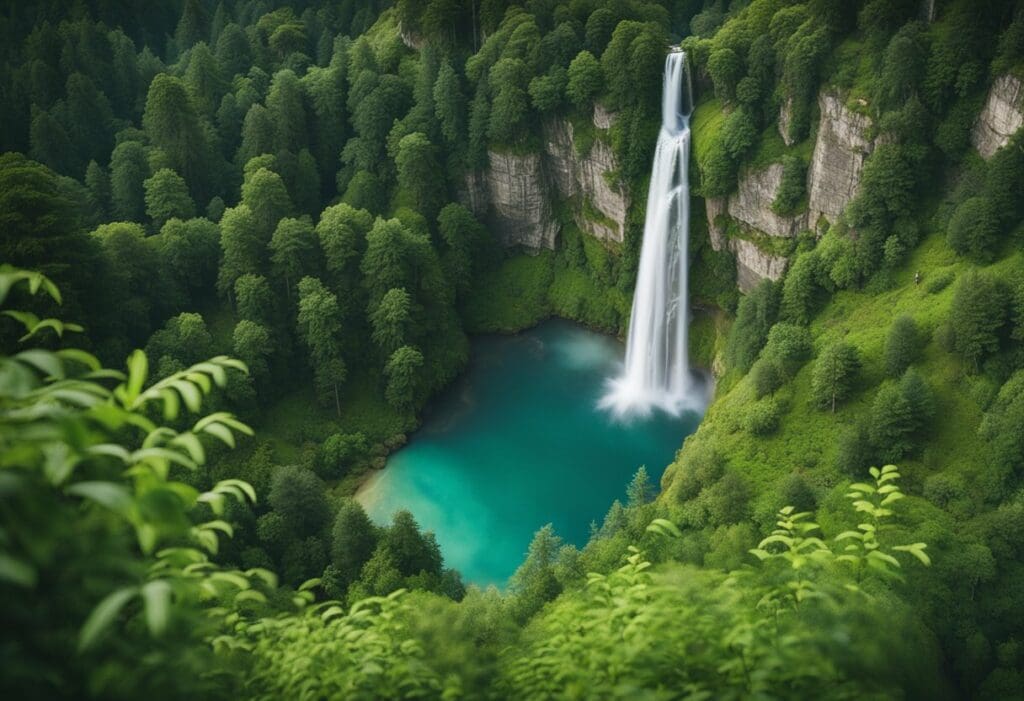
As we contemplate the path towards the future, it’s evident that sustainability lies at the heart of preserving Ireland’s natural beauty for generations to come. Our decisions today will shape Ireland, which future generations will inherit. The call to embrace sustainable practices in every aspect of travel has never been more pressing.
Our Commitment to Sustainability
- Educating Travellers: We are dedicated to educating travellers about the importance of sustainable tourism.
- Supporting Local Communities: Our focus is encouraging travellers to support local economies and artisanal practices.
- Minimising Environmental Impact: We aim to minimise our ecological footprint by promoting eco-friendly travel options.
In our ongoing endeavours, we strive to embody sustainable tourism that respects our country’s natural heritage. This involves tangible actions like reducing waste, conserving water, and protecting biodiversity.
Inspiring Through Heritage
Irish heritage is not just a tale of the past; it’s a living, breathing inspiration for a sustainable future. By learning from our ancestors’ harmonious relationship with the land, we can foster a deeper appreciation for our natural heritage and its role in our lives today.
Encouraging Sustainable Choices
- Eco-Accommodations: We promote stays at accommodations that are committed to environmental stewardship.
- Public Transport: We advocate using public transport to reduce carbon emissions.
- Sustainable Itineraries: We craft itineraries that balance enjoyment with ecological sensibility.
By honouring our past and making conscientious choices, we hold the power to transform tourism into a force for good. These steps protect our paradise and ensure that Ireland continues to inspire and delight travellers for countless tomorrows.
Frequently Asked Questions
In this section, we’ll address some of the most common questions regarding how Ireland’s natural heritage has become a cornerstone for sustainable tourism and the practical steps to preserve its beauty.
How does Ireland’s natural heritage influence sustainable tourism initiatives?
Ireland’s verdant landscapes and rich ecosystems have inspired a movement towards sustainability in tourism. For instance, organisations like Sustainable Travel Ireland work to develop eco-friendly practices that protect local environments while still welcoming visitors.
Why is sustainable travel important in the context of preserving natural landscapes?
Sustainable travel ensures that the breathtaking scenery and diverse habitats that define Ireland’s natural attractions, such as the Bog of Allen, are maintained for future generations to admire and explore. Learn more about the significance of these landscapes by visiting the Bog of Allen Nature Centre.
What role does ecotourism play in the conservation of Ireland’s ecosystems?
Ecotourism plays a pivotal role by fostering an appreciation for nature and the need for its preservation, thereby supporting efforts to conserve Ireland’s unique ecosystems. Tourism initiatives promote this by integrating local cultural elements, as highlighted by EcoStay Ireland, emphasising preserving traditions and landmarks within eco-tourism.
How do Green Hospitality Awards recognise hotels for their eco-friendly practices?
Green Hospitality Awards are given to hotels that demonstrate a commitment to the environment through waste reduction, energy efficiency, and sustainable resource management, recognising their contributions to making Ireland a green travel destination.
In what ways can tourists contribute to the sustainability of Irish natural attractions?
Tourists can contribute by engaging with and supporting businesses with a sustainable ethos, like those certified by organisations for their commitment to eco-friendly practices. Moreover, by following responsible travel habits, such as leaving no trace during their visits, tourists help preserve Ireland’s pristine environments.
How are the Sustainable Development Goals being integrated into Irish tourism policies?
Irish tourism policies are increasingly aligned with the Sustainable Development Goals by promoting responsible travel, protecting natural resources, and ensuring that tourism growth contributes positively to local communities and the environment. This alignment leads to creating a more sustainable future for tourism in Ireland.






